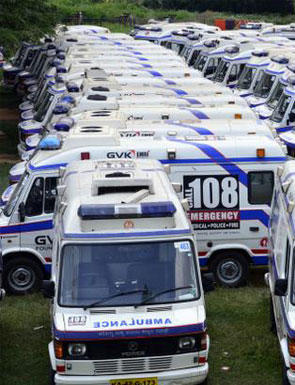



GPS Tracking provides a method for keeping track of emergency vehicles that are on active 'runs.' This helps dispatchers to use the closest units to an accident scene. With time often of the essence, this helps reduce arrivals to accident locations which can save lives.
GPS Tracking systems with real-time reporting give screen updates every two minutes in order to be able to follow the location of an emergency vehicle at all times, not just during emergency runs. This helps save on fuel and prevent unauthorized use as well.
Knowing where an ambulance or a fire brigade is during a run will help dispatchers to be able to re-route based on the quickest route and other information such as traffic jams, etc.
If an ambulance has its lights and sirens activated, it is apparent that it needs to reach its destination quickly. But how quickly? Is the driver placing others in danger because of risky driving and speeds? GPS Tracking reports on this data and it can then be compiled into a report to make sure that a driver is driving in an unsafe manner, even when on emergency runs.
Did the ambulance take the quickest route to an intended destination? Was there a closer or better route that should have been considered? Re-routing does not mean second-guessing, but rather disseminating information that an ambulance driver might not have. It makes sense for more than one pair of eyes looks at the whole picture.
Ambulance and emergency equipment have a tough job to just get to the scene of an accident without having one themselves. It is imperative, now, that GPS Tracking systems become integrated within emergency departments.
